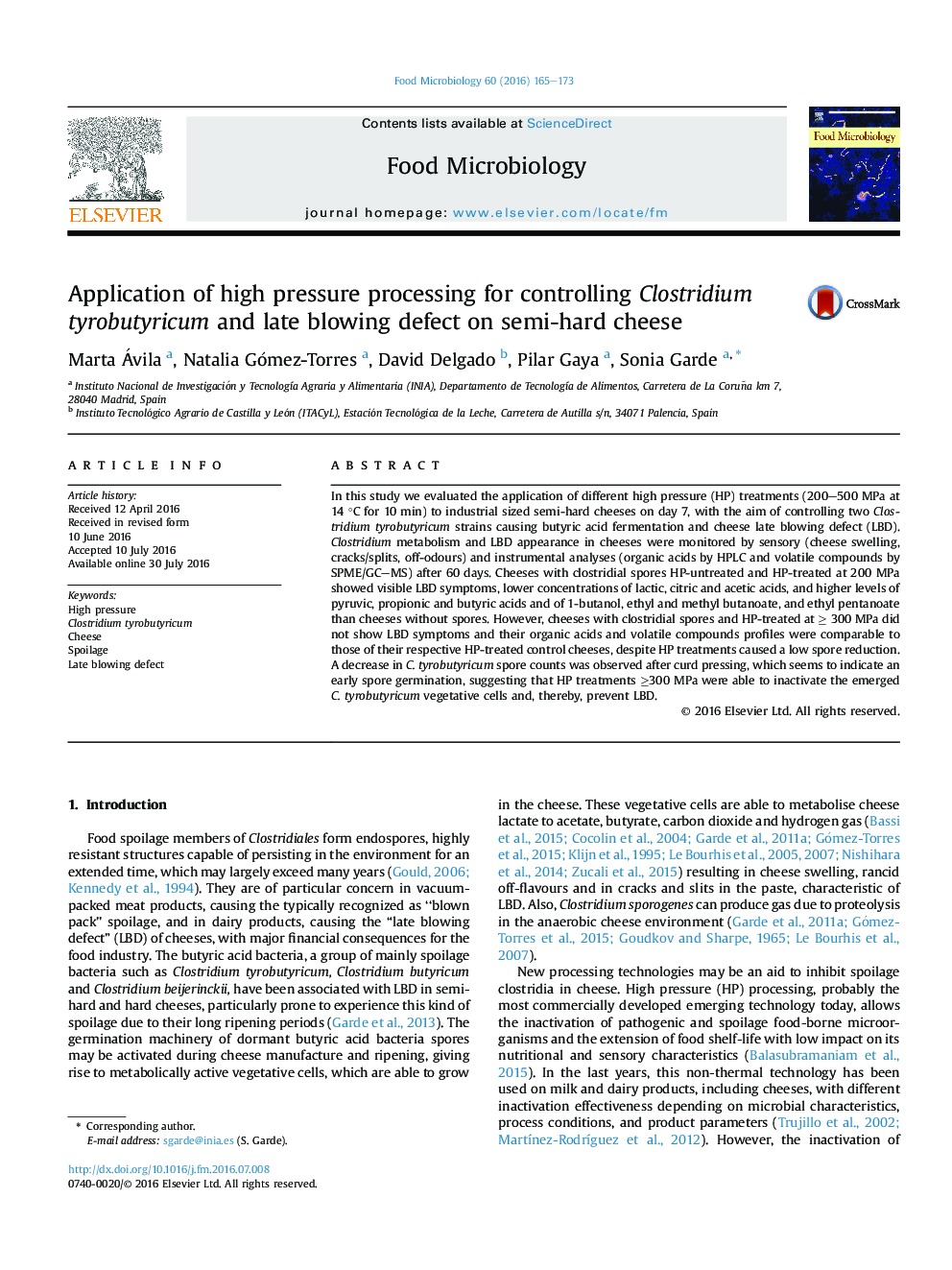| Article ID | Journal | Published Year | Pages | File Type |
|---|---|---|---|---|
| 6288363 | Food Microbiology | 2016 | 9 Pages |
â¢High-pressure processing (HPP) offers new applications in cheese preservation.â¢Cheeses were made with spores of 2 potent Clostridium tyrobutyricum cheese spoilers.â¢HPP was used to control C. tyrobutyricum and late blowing defect (LBD).â¢HPP of 7-d-old cheeses at â¥Â 300 MPa (14 °C, 10 min) prevented LBD at least for 60 d of ripening.
In this study we evaluated the application of different high pressure (HP) treatments (200-500 MPa at 14 °C for 10 min) to industrial sized semi-hard cheeses on day 7, with the aim of controlling two Clostridium tyrobutyricum strains causing butyric acid fermentation and cheese late blowing defect (LBD). Clostridium metabolism and LBD appearance in cheeses were monitored by sensory (cheese swelling, cracks/splits, off-odours) and instrumental analyses (organic acids by HPLC and volatile compounds by SPME/GC-MS) after 60 days. Cheeses with clostridial spores HP-untreated and HP-treated at 200 MPa showed visible LBD symptoms, lower concentrations of lactic, citric and acetic acids, and higher levels of pyruvic, propionic and butyric acids and of 1-butanol, ethyl and methyl butanoate, and ethyl pentanoate than cheeses without spores. However, cheeses with clostridial spores and HP-treated at ⥠300 MPa did not show LBD symptoms and their organic acids and volatile compounds profiles were comparable to those of their respective HP-treated control cheeses, despite HP treatments caused a low spore reduction. A decrease in C. tyrobutyricum spore counts was observed after curd pressing, which seems to indicate an early spore germination, suggesting that HP treatments â¥300 MPa were able to inactivate the emerged C. tyrobutyricum vegetative cells and, thereby, prevent LBD.
